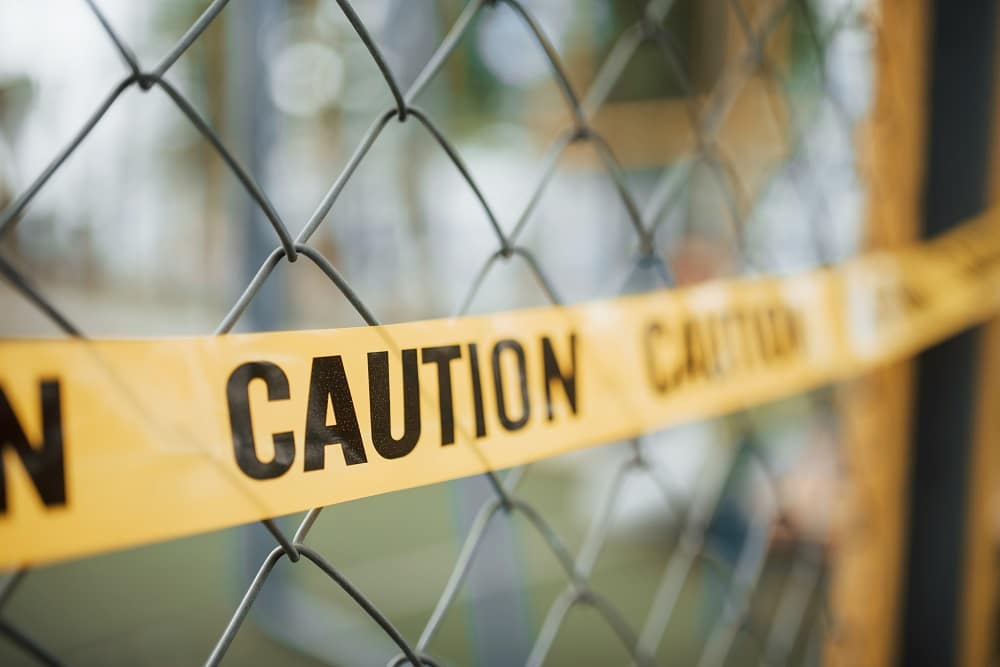If you’re subjected to unsafe working conditions, whether you’re in an office, a factory, a restaurant or anywhere else, you have the right to speak up. You also have the right to protect yourself from unsafe work conditions.
But you have to be able to identify them first. Continue reading below to find out how to identify unsafe working conditions.

How to Identify Unsafe Working Conditions
Your employer has a responsibility to keep you safe by providing a work environment that is free “from danger to the life, safety, or health of employees as the nature of the employment reasonably permits,” according to California Labor Code.
It’s always important to look out for safety hazards, though – even if you trust that your employer is doing everything it can to protect you and other workers. You need to watch for:
- Safety hazards
- Biological hazards
- Physical hazards
- Ergonomic hazards
- Chemical hazards
- Work organization hazards
How to Identify Safety Hazards at Work
If you see a safety hazard at work, let a supervisor know before you or someone else gets hurt.
Safety hazards can include:
- Confined spaces
- Electrical hazards, like frayed wires or improper wiring
- Things that can cause falls from heights
- Things that can cause tripping or slips and falls
- Unguarded machinery
How to Identify Biological Hazards at Work
Biological hazards are things that can cause disease as a result of working with people, animals or infectious organic materials.
Biological hazards can include:
- Animal droppings
- Bacteria and viruses
- Blood
- Insect bites or stings
- Mold or fungus
How to Identify Physical Hazards at Work
Physical hazards are environmental factors that can harm someone without requiring the person to physically touch something. Physical hazards can include:
- Continuous loud noise
- Radiation
- Sunlight or ultraviolet rays
- Temperature extremes
How to Identify Ergonomic Hazards at Work
Ergonomic hazards are those things that put strain on a person’s body. Ergonomic hazards can include:
- Awkward, repetitive movements
- Constant vibration
- Frequent lifting
- Poorly adjusted workstations
How to Identify Chemical Hazards at Work
Chemical hazards are present when workers are exposed to chemical preparations in liquid, solid or gas forms. Chemical hazards can include:
- Chemicals in unlabeled containers
- Cleaning products and solvents
- Flammable materials
- Gases like carbon monoxide, propane and acetylene
- Pesticides
How to Identify Work Organization Hazards at Work
Work organization hazards are things that cause short- and long-term effects, including stress. Some work organization hazards include:
- Intensity or pace of work
- Limited flexibility in the workplace
- Sexual harassment
- Workplace violence

What Are Some Unsafe Working Conditions?
Sometimes it’s easy to spot unsafe working conditions – you can tell if equipment is falling apart, there’s an open flame in a dangerous spot, or an untrained worker is operating equipment incorrectly. But that’s not always true.
Here are a few examples of some unsafe working conditions that exist in many workplaces – and that go undetected:
- Lack of training
- Operating equipment without authorization
- Using damaged equipment or equipment that hasn’t been properly calibrated
- Too many workers in hazardous areas
- Failure to clean up spills
- Inadequate safety warnings
- Exposure to toxins
- Failure to fix dangerous structures
- Repetitive stress injuries
- Failure to supply or use adequate safety equipment and PPE
What to Do if You Identify Unsafe Working Conditions
If you encounter unsafe working conditions, tell your immediate supervisor. If your supervisor doesn’t correct the issue, escalate your complaint to his or her supervisor – you could be protecting yourself and others from a serious injury.
Although it seems simple, it can be incredibly tough to get your employer to correct unsafe conditions in your workplace. If that’s the case in your situation, you may need to file a report with California’s Cal/OSHA Enforcement Branch.
You might have the right to refuse to work until your employer corrects the situation, or until your employer investigates and finds out that there isn’t any imminent danger. However, before you refuse to work, you probably want to talk to an unsafe working conditions lawyer in Glendale or L.A. who understands the law and how it applies in your situation.

Can I Be Fired for Refusing to Work in Unsafe Conditions?
Workers have a right to refuse to work in unsafe conditions. The Occupational Safety and Health Administration says that you should bring unsafe conditions to your employer’s attention – and then, if the condition clearly presents a risk of death or serious physical harm, you can refuse to work on the spot. However, if it’s possible, you can also file a complaint with OSHA and give OSHA time to inspect the situation.
Your right to refuse to complete a task or job may be protected – but only if the situation meets all these conditions:
- You have asked your employer to eliminate the danger, but your employer failed to do so (provided there wasn’t an immediate risk of death or serious physical harm)
- You are acting in good faith, which means you genuinely believe that there’s imminent danger
- A reasonable person would agree that the danger is real
- You don’t have enough time (because the hazard is urgent) to get the dangerous situation corrected through regular enforcement channels, like requesting an OSHA inspection
If you choose to refuse to work, you should first ask your employer to fix the hazard or to assign you to other work. You should also let your employer know that you won’t perform the work until the hazard is fixed, and you should also remain at the worksite until your employer tells you to leave.
What if Your Employer Retaliates Against You for Refusing to Perform Dangerous Work?
Your employer isn’t supposed to retaliate against you for refusing to perform dangerous work. You should contact OSHA if that happens – and within 30 days of the incident.

How Do I Report Unsafe Working Conditions to OSHA?
You can report unsafe working conditions to OSHA in one of several ways. You can use an online complaint form, by fax, mail or email, or by telephone. You can also visit your local OSHA office to discuss your complaint with OSHA staff. If it’s an emergency, or if the hazard is immediately life-threatening, you can either call your local OSHA Regional Office or call 800-321-OSHA.
If you are injured at work because your employer didn’t protect you and should have, you may be entitled to sue for damages. The first step is to contact an employment attorney who will evaluate your case and give you the legal advice you need.
Call us at 818-805-1645 or toll-free at 800-774-4163 for a free case evaluation now. We may be able to help you get the compensation you deserve.
Can You Be Fired for Reporting to OSHA?
Under federal law, it’s illegal for an employer to fire a person for reporting OSHA violations. In fact, it’s a form of whistleblowing – and whistleblowing is protected under both federal and California law.
Can OSHA Shut Down a Job?
Legally, OSHA can’t shut down a job site on the spot. An OSHA inspector can ask your employer to stop operations – but it’s up to your employer whether the operations stop or continue. (Only a court order can officially stop operations on a job site.) OSHA inspectors don’t make recommendations out of thin air, though; if an inspector asks your employer to stop operations, it’s most likely for a good reason.
Can You Sue for Unsafe Working Conditions?
Every day, an average of 14 American workers are killed on the job – and more than 2,500 suffer injuries or illness that are so severe that they miss work.
In some cases, you can sue for unsafe working conditions. However, you should notify your employer, call your union, or even contact OSHA. That all goes out the window, though, if you’re injured due to unsafe working conditions. If you’re injured at work, even if it isn’t due to an OSHA safety violation, you probably want to get in touch with a Glendale personal injury attorney as soon as possible.
You can call us at 818-230-8380 to talk about your case with an injury attorney who cares about the outcome of your situation – even if you don’t end up suing or settling with your employer for compensation. We can visit you at home or in the hospital to discuss your case and help you start moving forward.




